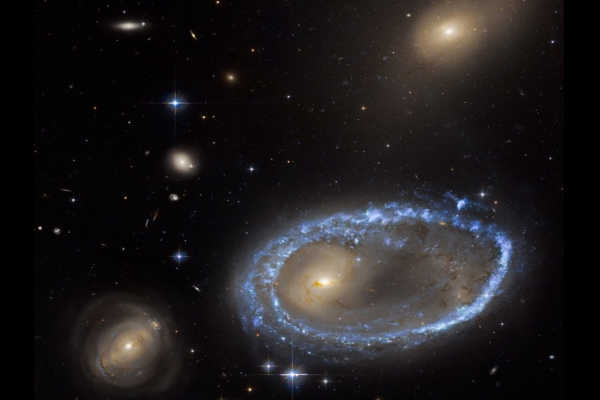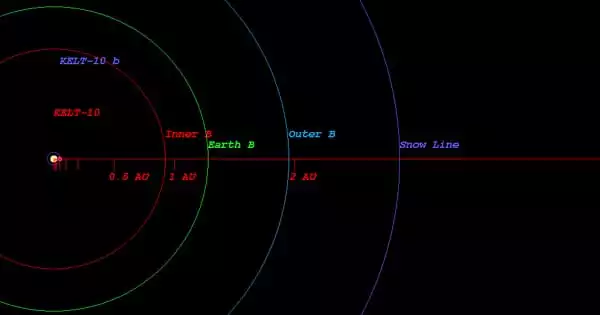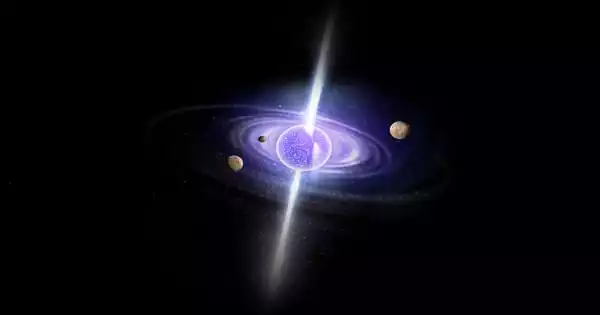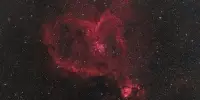The presence of transverse rotation (in the plane of the sky) in three dwarf spheroidal galaxies has been discovered by an international team of astrophysicists from the Instituto de Astrofisica de Canarias (IAC), the University of La Laguna, and the Space Telescope Science Institute. These are very faint galaxies that are difficult to observe. These new discoveries aid in tracing their evolutionary history. The discovery was made using the most recent data from the European Space Agency’s GAIA satellite. The study’s findings were recently published in the journal Monthly Notices of the Royal Astronomical Society (MNRAS).
Cosmology is particularly interested in dwarf galaxies. According to the standard cosmological model, this type of galaxy was the first to form. The Milky Way and other large galaxies have destroyed and cannibalized the majority of them. Those that remain, on the other hand, can be studied and contain valuable information about the early Universe.
Dwarf spheroidal galaxies are a subclass of dwarf galaxies. They are very diffuse, have a low luminosity, and have a high proportion of dark matter with little or no gas. They have been extensively researched since their discovery. However, due to the technical difficulties involved in a detailed study of their mechanics, their internal kinematics are still little known.
An international team of astrophysicists has discovered the presence of transverse rotation in three dwarf spheroidal galaxies. These are very faint types of galaxies and are quite difficult to observe.
Several previous studies have shown that dwarf spheroidals do not have internal rotation patterns, but rather that their stars move in random orbits predominantly towards and away from the galaxy’s center. The irregulars, the other major subclass of dwarfs, have a lot of gas and, in some cases, internal rotation. These differences point to a different origin for the two types of dwarfs, or at the very least a very different evolutionary history in which interactions with large galaxies, in our case the Milky Way, played a critical role in eliminating spheroidal internal rotation.
The team of astrophysicists from the IAC and the STScI studied the internal kinematics of six dwarf spheroidal galaxies, satellites of the Milky Way, using the most recent data from ESA’s Gaia, and discovered the presence of transverse rotation (in the plane of the sky) in three of them: Carina, Fornax, and Sculptor. Except for the Sagittarius spheroidal, which is strongly distorted by the Milky Way’s gravitational potential and thus is not representative of its type, these are the first detections of this type of rotation in dwarf spheroidal galaxies.

“The significance of this result stems from the fact that, in general, the internal kinematics of galaxies, in this case, their rotation, is an important tracer of their evolutionary history and of the conditions under which the system was formed,” explains Alberto Manuel Martnez-Garca, a doctoral student at the IAC and the ULL and the article’s first author.
“Although the standard model of cosmology assumes that dwarf galaxies were the first to form, it is unclear whether they are simple systems or whether the ones we see are the result of the agglomeration of smaller and older systems. The presence of rotation points to the second possibility. It also suggests a common origin for all dwarf galaxies, both those that are rich in gas at the moment (the irregulars) and those that aren’t (the spheroidals) “, explains Andrés del Pino, STScI researcher and co-author of the article.
“The Gaia satellite has transformed our understanding of the Milky Way and its surroundings by providing extremely precise measurements of the positions and motions of nearly two thousand million stars. Although the data from Gaia are primarily used to study our Galaxy, this ESA mission has also opened a new window on the study of the Milky Way’s satellite galaxies, providing specific access to their internal kinematics “, says Antonio Aparicio, an IAC and ULL researcher and co-author of the article.
Nonetheless, the researchers claim that studies based on Gaia data are fraught with technical difficulties. To begin, it is necessary to determine which stars in the database truly belong to satellite galaxies and which to the Milky Way itself, as the latter tend to contaminate the sample. The problem is that, while the data to be analyzed are limited to the region and angular size of the spheroidal under study, which is one-quarter the angular diameter of the Moon, the vast majority of the stars detected in this area belong to the Milky Way and thus contaminate the sample.
Furthermore, the distance between the spheroidals studied, which can reach half a million light-years, and the low intrinsic luminosity of their stars implies that the measurements are influenced by a significant amount of noise. For all of these reasons, data analysis necessitates a thorough filtration and in-depth examination of the various observational parameters in order to reach reliable conclusions.
















